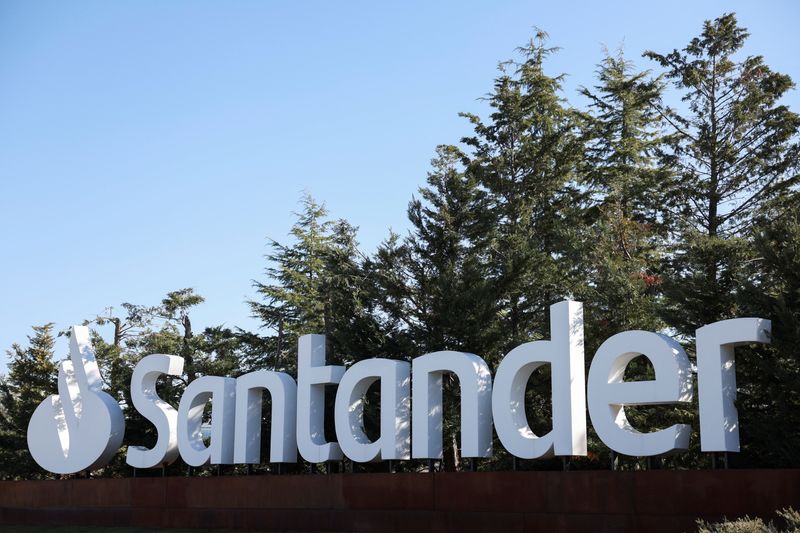By Jesús Aguado
MADRID (Reuters) - A solid rise in revenues and lending income allowed Spain's Santander (BME:SAN) to post an 18% jump in profit to a record 9.6 billion euros in 2022, offsetting higher provisions set aside against uncertain economic conditions.
The euro zone's second-biggest lender by market value posted net profit in the October to December period of 2.29 billion euros, up around 1% from a year before and above the 2.07 billion euros forecast by analysts in a Reuters poll.
Net profit in 2022 - which exceeded the 9.4 billion euros expected by analysts - was boosted by higher interest rates and revenues, the addition of 7 million new clients, and a solid performance at its Corporate and Investment Bank unit.
Santander said its underlying return-on-tangible equity ratio (ROTE), a measure of profitability, finished the year at 13.37% versus 12.73% in 2021. It targeted ROTE above 15% for 2023.
At 0928 GMT its shares were up around 4%, outperforming Spain's blue-chip index Ibex-35.
In the fourth quarter loan loss provisions more than doubled year-on-year to 3.02 billion euros, mainly in the United States and Brazil, though that was slightly below analysts' forecasts and followed the release of 750 million euros a year earlier.
The lender's cost of risk rose to 99 basis points from 86 basis points in September. For 2023, it expected cost of risk to rise but remain below 120 basis points.
Banks across Europe are beginning to benefit from higher borrowing costs. Santander's net interest income - earnings on loans minus deposit costs - rose 17% to 10.2 billion euros in the quarter, broadly in line with forecasts. Full-year NII grew 16%.
Revenues rose 12% in 2022, above market forecasts, and the bank targeted double-digit revenue growth for 2023.
It benefited from movements in local currencies in Latin America, but results in this region were also marked by rising inflation across emerging markets, especially Brazil. Overall, group costs in 2022 rose 11.6%.
In Brazil, which accounts for more than a quarter of group earnings, underlying net profit fell 8% year-on-year in the quarter, and NII dropped 1% against the previous quarter, with cost of risk rising to 479 bps from 446 bps in September.
Underlying net profit in the United States fell 43% in the quarter, while in Britain profit was down 38%, also on higher impairments and charges following a regulatory fine.
This was in contrast to Spain, where net profit rose more than six-fold as provisions fell 38% in the quarter compared to the same period of 2021, while NII rose 37%.
In terms of solvency, Santander's tier-1 fully loaded capital ratio, the strictest measure of solvency, fell to 12.04% from 12.10% in September, but remained above its 12% target.

Santander said its cost-to-income ratio closed the year at 45.8% compared to 46.2% in 2021. It aimed for a ratio between 44 and 45% for 2023.
($1 = 0.9074 euros)
